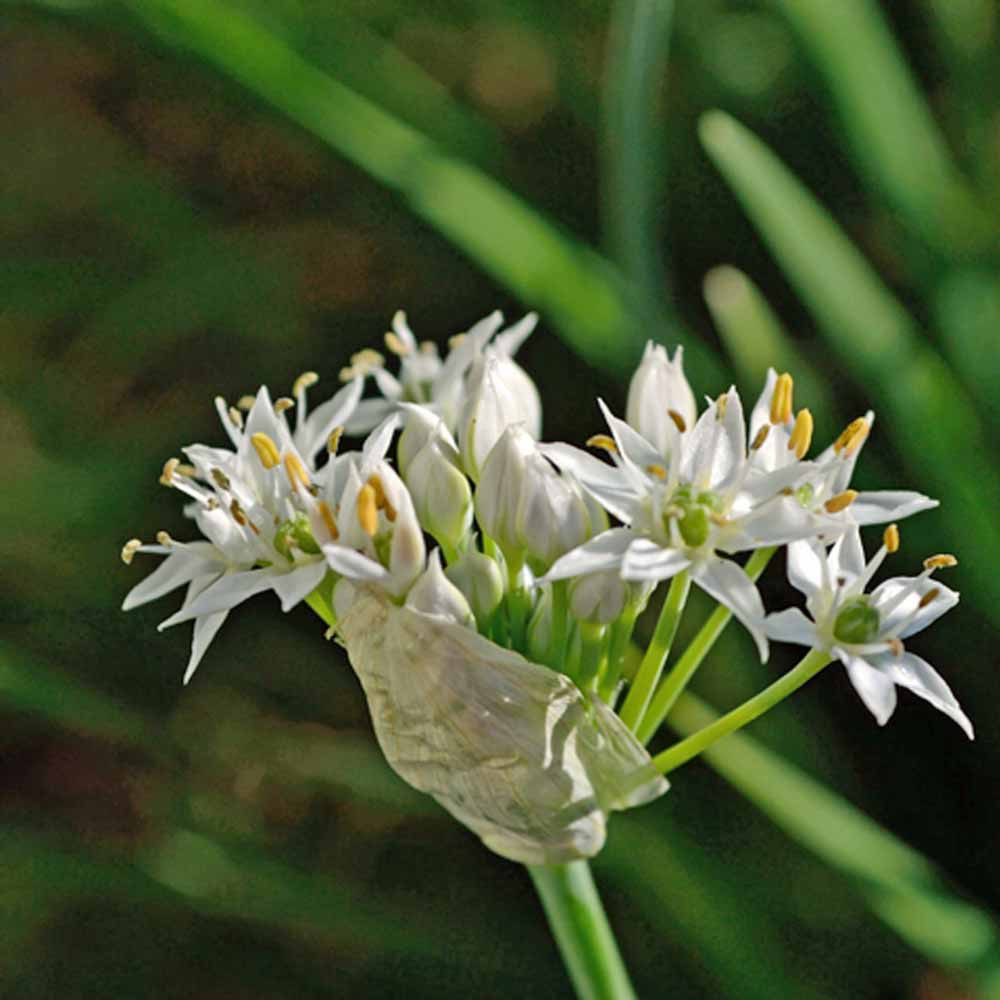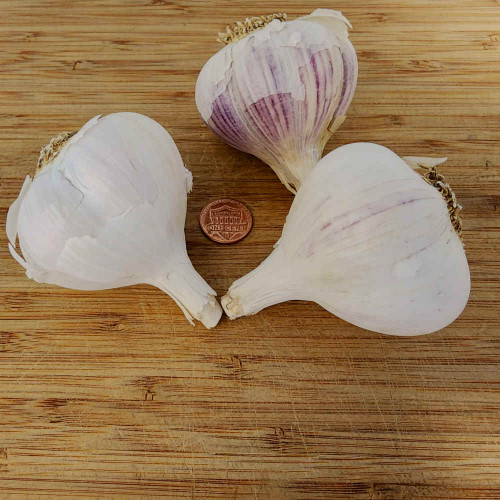Description
Garlic Chives - Easy Growing Flavor That Brings Luck
When this graceful herb starts blooming in midsummer, it seems to explode with gracefully petite white flowers. Long considered a symbol of good luck in many cultures, they are often planted near entrances and used in festive celebrations to bring positive energy and prosperity.
They are much more than simply lucky and a pretty face, however. Perennial in all but the coldest climates, they are equally happy in a large garden, a small balcony planter, or even a windowsill pot. They easily adapt to different growing conditions and thrive in both full sun and partial shade. Offering loads of flavor for almost no work, garlic chives are an excellent low maintenance herb and seasoning.
Originating in Asia, oral history history tells of Siberians offering chives to Alexander the Great because it was the only green plant available.
Details
Very long-lived and easy to grow – often thriving for a decade or more in one spot – they produce lovely white star-shaped flower heads that bloom from mid- to late spring through early fall and are fabulously attractive to bees, butterflies and many other pollinators.
Although it is a member of the onion and garlic family, garlic chives has more of a milder, roasted garlic flavor than either onion or garlic. These larger and more robust plants are more suited to use as a vegetable than strictly an herb. The flowers are visually appealing with a mild and slightly sweet flavor that provides the perfect counterpoint in many dishes.
Garlic chives are distinguished by their long, flat, and narrow dark green leaves that can grow to be around 12-20 inches long. Readily sprouting from seed, it grows in slowly expanding perennial clumps.
In warmer areas, garlic chives are often green all year round, while in colder areas the leaves and stalks will die back to the ground, resprouting from roots or rhizomes in the spring.
One of the earliest and most reliable spring vegetables to appear, it’s no wonder why garlic chives have become such a staple, given its winter hardy and perennial nature, and it’s drought and soil tolerance.
Other names it is known by include Asian chives, Chinese chives, Chinese leek or Oriental garlic.
History
Garlic chives are native to southwestern China, dating back to at least the Chou dynasty (1027 to 256 BC). It’s flavor ensured popularity and extensive travel through any and all trade routes, becoming a new favorite wherever it landed.
The 1,484 page medical and herbal text titled “The Herball or Generall Historie of Plantes”, written by John Gerard and first published in 1597 contains information on the historic medicinal uses of chives.
Vincent van Gogh used garlic chives in a still life painting that he created in Paris in January-February 1887. Appropriately titled “Flowerpot with Garlic Chives”, the oil painting depicts a pot of garlic chives against a wallpaper background, and Gogh meticulously captured the characteristic flat leaves of the plant. The artist left the painting at his brother’s apartment in Paris, where it remained in the family until transfer to the Vincent van Gogh Foundation in Amsterdam in 1962.
Uses
From stir-fries and soups to dumplings and sauces, garlic chives are a versatile herb that can enhance the flavor of various dishes. Their mild yet rich garlic flavor makes them a favorite ingredient in many Asian recipes.
Used in many dishes from dips to steaks, the delicate white blossoms make striking garnishes in salads and soups. The flowers are used to make Garlic Chive Flower Sauce, or “Jiu Cai Hua Jiang”, which is used as a sauce for hotpot dishes in winter. The use of chive flowers in dipping sauces dates back to the 8th or 9th century AD during the Zhou dynasty in China.
Garlic chives are a classic element of pad Thai and many other Asian dishes. They can be used in stir-fry, tempura, stuffed into dumplings, and used in egg dishes. They are also minced and used to finish meat, poultry, or seafood dishes and to flavor soups, marinades, vinegar, and dipping sauces. Garlic chives pair well with fresh herbs, soft cheeses, mushrooms, noodles, meats, and chilies.
In traditional medicine, garlic chives have been used to promote digestion, improve blood circulation, and boost the immune system. They are also believed to have anti-aging properties.
Companion Planting
Garlic chives have a strong volatile oil that deters pests and fungal diseases, making it a good companion plant to broccoli, kale, cauliflower, and strawberries. Plant along the edges of beds.
Those same oils are also unattractive to deer so chives can serve in unprotected gardens as a pretty landscape plant.
Growing Tip
In warmer climates the plants are evergreen but in colder climates they die back to the ground over the winter. Cutting the leaves back encourages new growth. Leaves can be harvested to eat anytime they are green.
This simple herb offers multiple benefits to a garden or edible landscape.
The flowers attract and support many types of beneficial insect pollinators, which increase flower sets and the yield in your food gardens.
The highly nutritious leaves can be “chopped and dropped” to serve as mulch.
Harvest Tip
Harvest the spear-shaped green leaves from mid-spring into fall by snipping the outer leaves of the plant an inch above soil level. Regular harvesting will encourage further growth.
Harvest flowers as soon as they bloom as they fade quickly.
The entire plant can be pruned to soil level after flowering and usually, it will regrow and likely flower again. At the end of the growing season, chives can be trimmed to just a few inches above soil level, mulched with compost or straw for overwintering.
Learn More
- Indoor Herbs - Better Than Houseplants
- Easy Herbed Mayonnaise in 30 Seconds
- Edible Flowers From Garden to Gourmet - Heirloom Varieties for Every Kitchen
From the soil to the seed to the food you eat - we'll help you grow your best garden!















